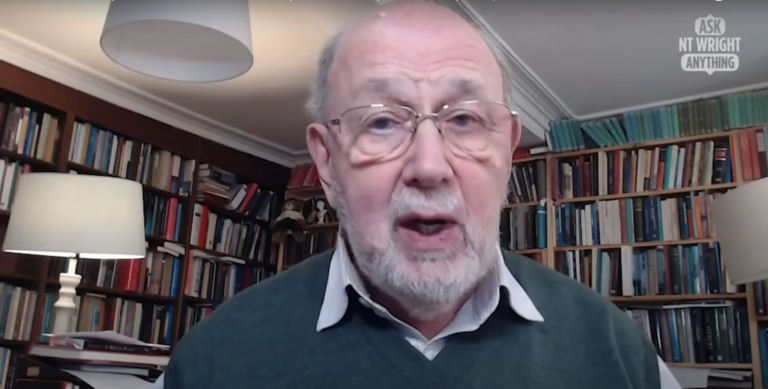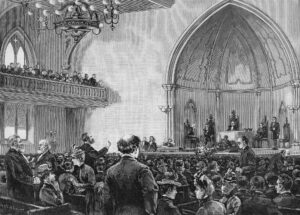Every Christian desires to become more like Christ. But if we are honest with ourselves, we often feel discouraged at our progress. So, how do we really change? Dane Ortlund, in his new book Deeper: Real Change for Real Sinners, argues that change is a matter of going deeper into the glorious riches of Christ and our identity in him. Ortlund’s book provides answers to the question: “What must happen in the individual human heart, most fundamentally, most deeply, for a man or woman to get traction and grow?” (173).
The first way in which the Christian grows is by seeing a fresh picture of who Jesus is. Chapter 1 depicts seven facets of Christ (his ruling, saving, befriending, persevering, interceding, returning, and tenderness) that “bring the living Christ himself into sharper, starker contrast, to see him loom larger and more radiant and more glorious than ever before” (23).
The second way the Christian grows is by having a “healthy discipline of self-despair” at their sin (38). This despair should cause us to see how helpless we are to take even a step forward in growth on our own. It is in this despair where the believer meets the gentleness, compassion, and goodness of the Lord Jesus Christ, and where we learn to set our gaze on his infinite beauty. We leave ourselves behind in repentance and walk with him with eyes of faith.

Deeper: Real Change for Real Sinners
Dane C. Ortlund
If you are looking to grow in Christ, Deeper: Real Change for Real Sinners is a must read. It will have you turning your eyes off of yourself and feeling the tenderness of Christ “ringing in your hearts most strongly” (32), which inevitably will bring real, lasting, Christ-filled, Spirit-empowered, God-honoring growth.
Growth takes place in the context of union with Christ. When Christ unites himself to a people, it means that what he does, they do, and they can never be separated. Our union with Christ assures us that Christ walks with us in all our pain, failure, shortcomings, and backslidings. “As far as sin in your life reaches, Christ and your union with him go deeper” (66).
Spiritual growth happens as we taste and see the depth of God’s love and his embrace of us. It is one thing to “know” God’s love cognitively, but it is another thing to experience it. “We grow in Christ no further than we enjoy his embrace of us. His tender, mighty, irreversible embrace into his own divine love” (70). His love does not change when we sin. He does not have to work himself up to love us—it is who he is. And as we enjoy his embrace of us, we grow.
We grow in Christ as we go deeper into the gospel. “The freeness of your outside-in justification is a central ingredient to fostering your inside-out sanctification” (110). As we plunge into our declaration of acquittal and are reminded of it afresh, we grow. We don’t move beyond the declaration of our justification—it is the very engine of the Christian life. Our justification feeds our sanctification.
As Ortlund notes, there are also horizontal realities of Christian growth. We grow in Christ when we are honest about our sin with God and with others. “In darkness, your sins fester and grow in strength. In the light, they wither and die” (114). Knowing that we have been cleansed from all defilement, we are free to be honest. This honesty about our sin is the means to enjoy and experience the reality of the gospel.
Another essential instrument is embracing pain. Ortlund distinguishes between two types: passive pain and active pain. Passive pain is not controllable; it comes upon the believer as a result of the fallen creation groaning for redemption. We grow as we receive “the bitterness of life as God’s gentle way of drawing us out of our misery of self and more deeply into spiritual maturity” (127). The purpose of this pain is to “wean us from the love of this world” (129) and to move us from a “professed theology to a heart theology” (133).
Active pain, on the other hand, comes from our intentional engagement in putting our sin to death. We mortify our sin not by focusing our attention on it, but focusing our eyes away from it and setting them upon Christ. When we focus our attention on our sin, we are in danger of “coddling it, pining after it, daydreaming about it,” but “we suffocate sin by redirecting our gaze to Christ” (139). As we enjoy the reality of all that we have in Christ, sin begins to loosen.
Often the slow development of a Christian’s visible sanctification can cause them to wonder if they are really saved. But the fact that we care about our sin proves that we are. “The longing for Christ, the frustration at our falls, the desire to be fully yielded to God—these are the cries of life, even of immature life. God will not let you go. He will be sure to love you on into heaven” (141). Our discouragement is a sign that we are his.
How do we absorb these marvelous truths into our hearts? Through two disciplines Ortlund describes as breathing: inhaling (Bible intake) and exhaling (prayer). Both are essential for life. The Bible is an extension of who God is; it is his voice speaking to us. We exhale by praying God’s Word back to him. He is our Father, and we pour out ourselves to him.
Ultimately, the only way we can do all of this is through the power of the Holy Spirit. He alone empowers us and makes Christ appear as beautiful as he truly is—directing our gaze upon the infinite beauty and goodness of the Lord Jesus Christ.
If you are looking to grow in Christ, Deeper: Real Change for Real Sinners is a must read. It will have you turning your eyes off of yourself and feeling the tenderness of Christ “ringing in your hearts most strongly” (32), which inevitably will bring real, lasting, Christ-filled, Spirit-empowered, God-honoring growth.
This review was originally published in The Reformation Fellowship Magazine 2 (November 2021): 30–31. Used with permission.
























